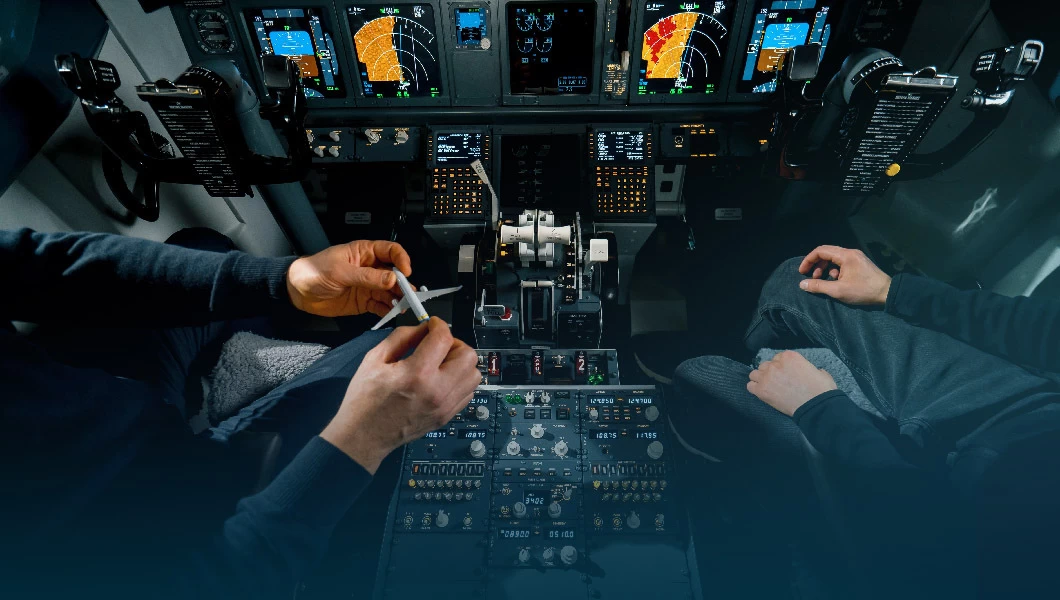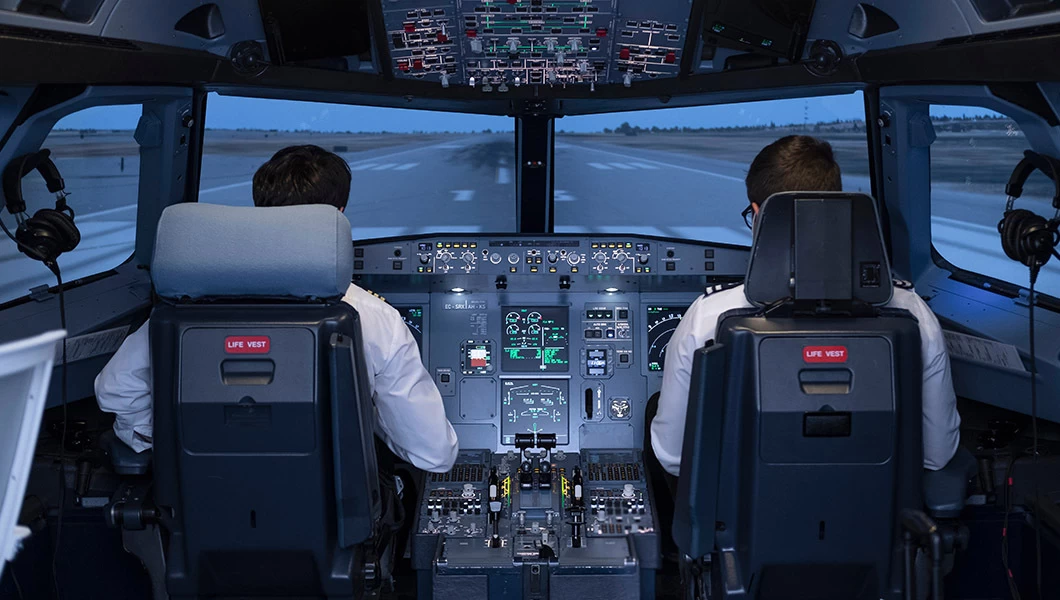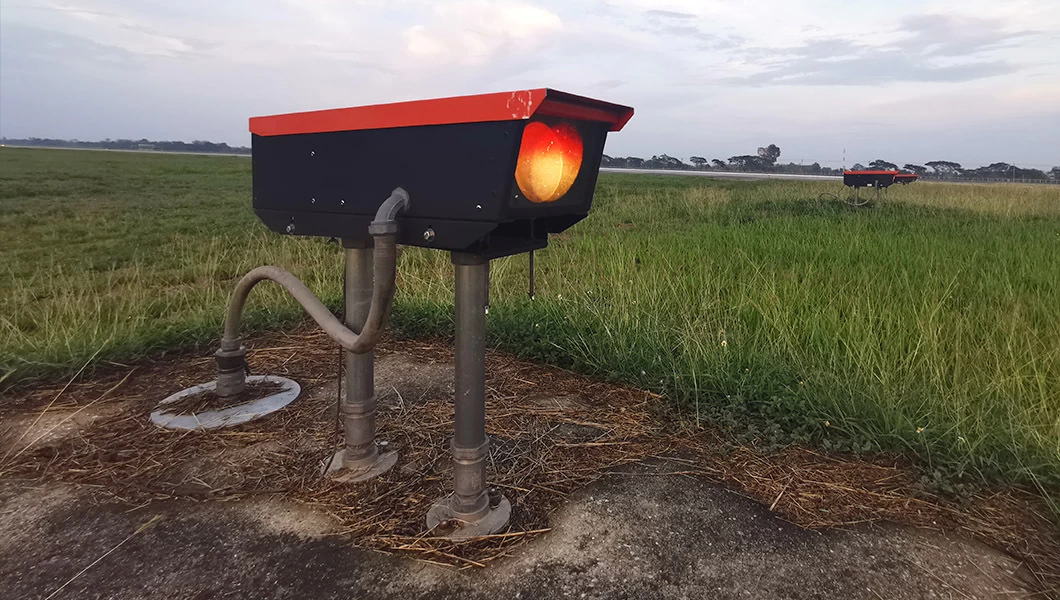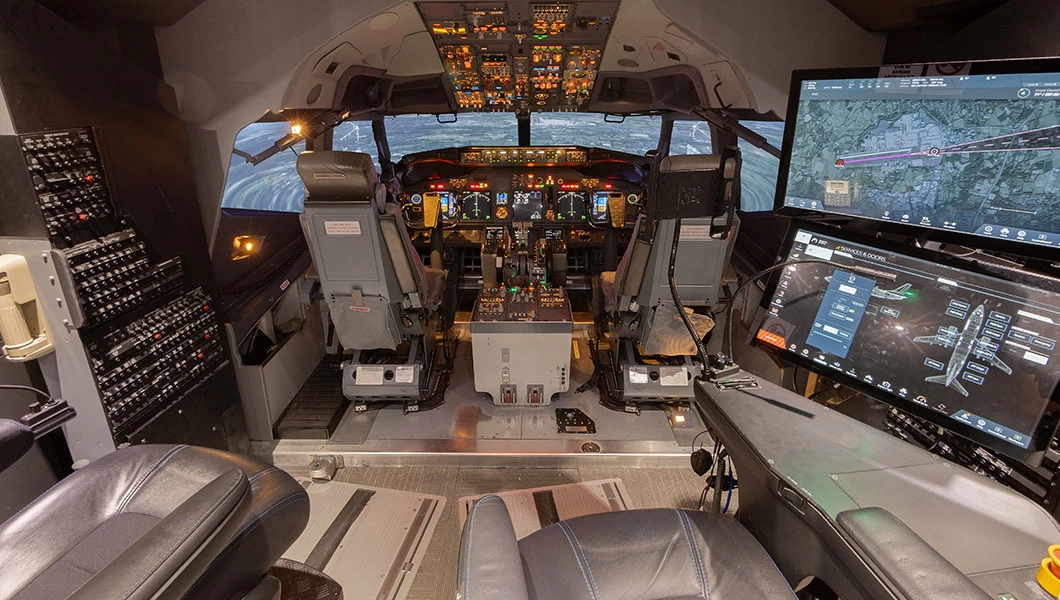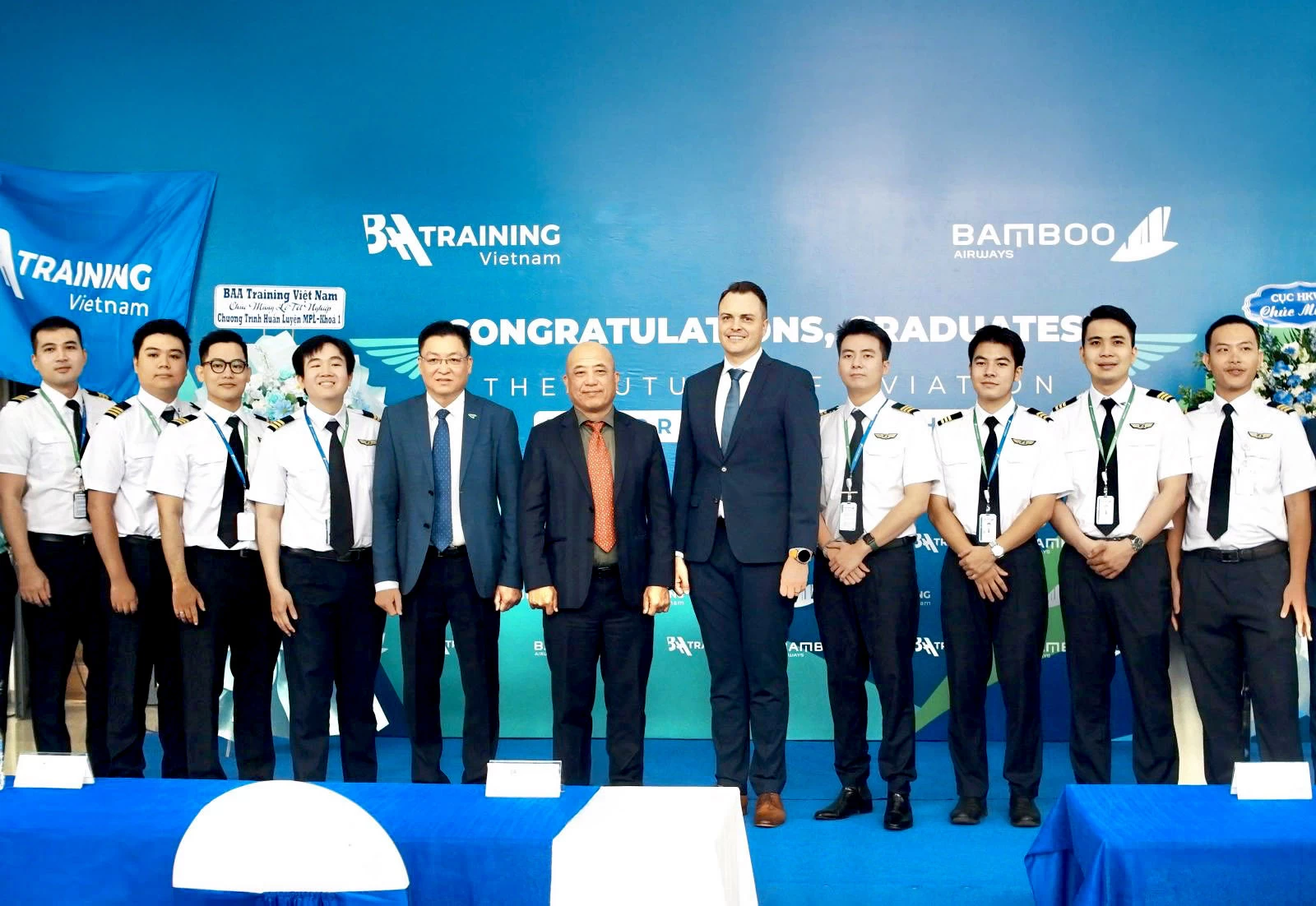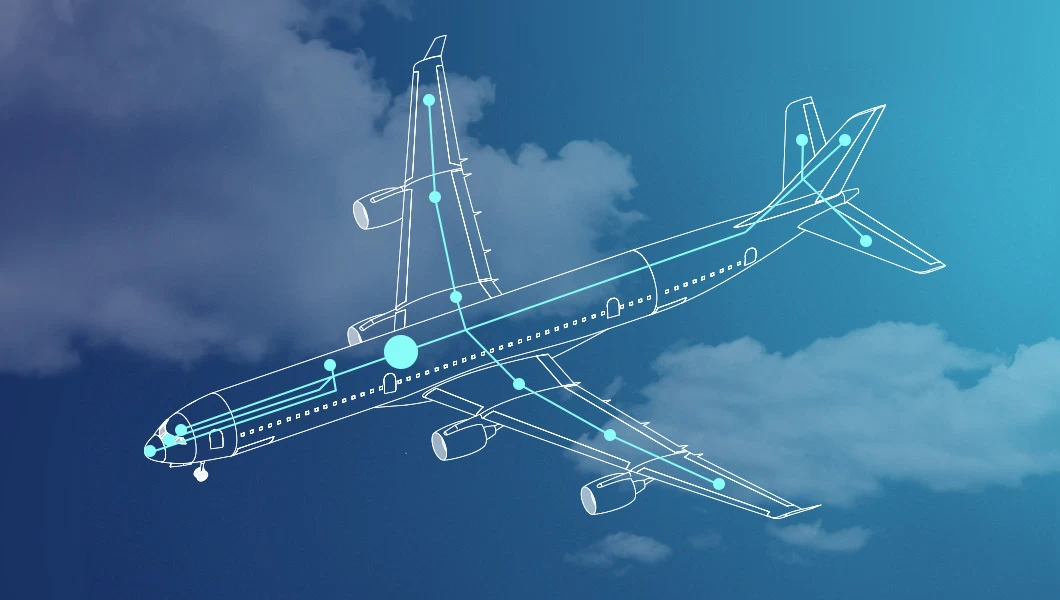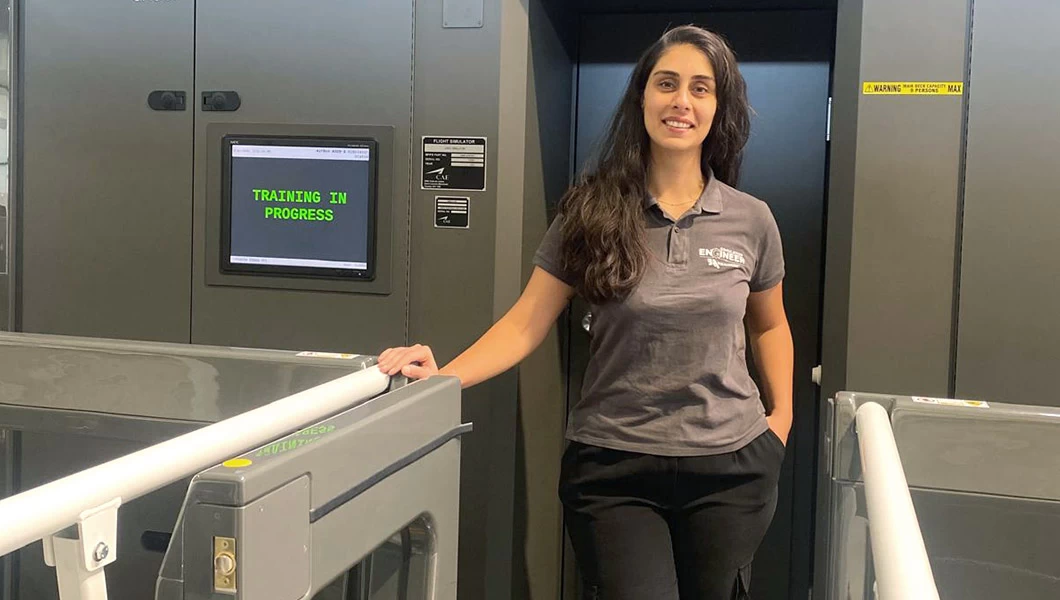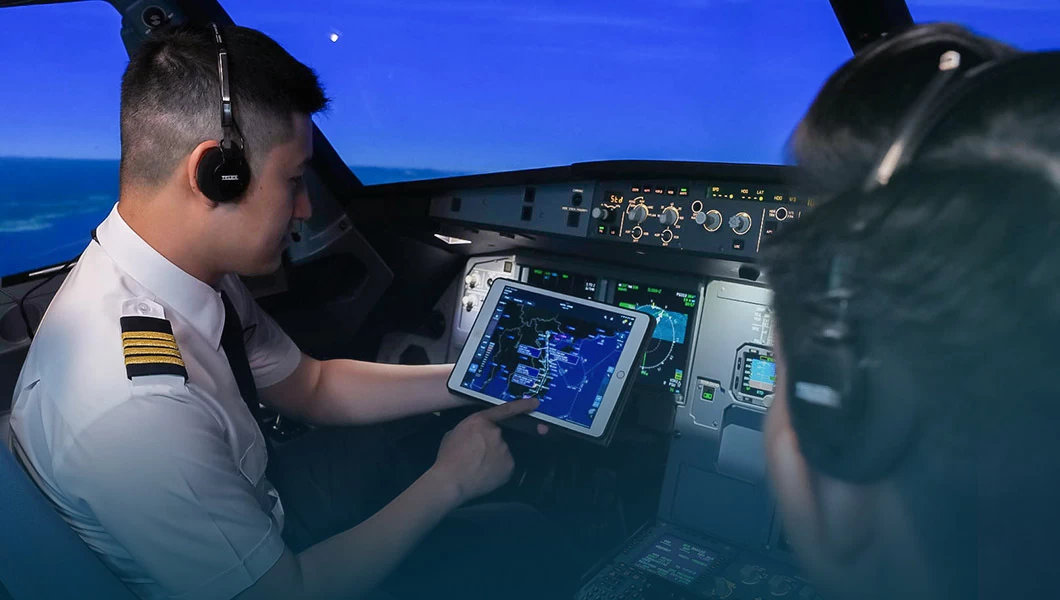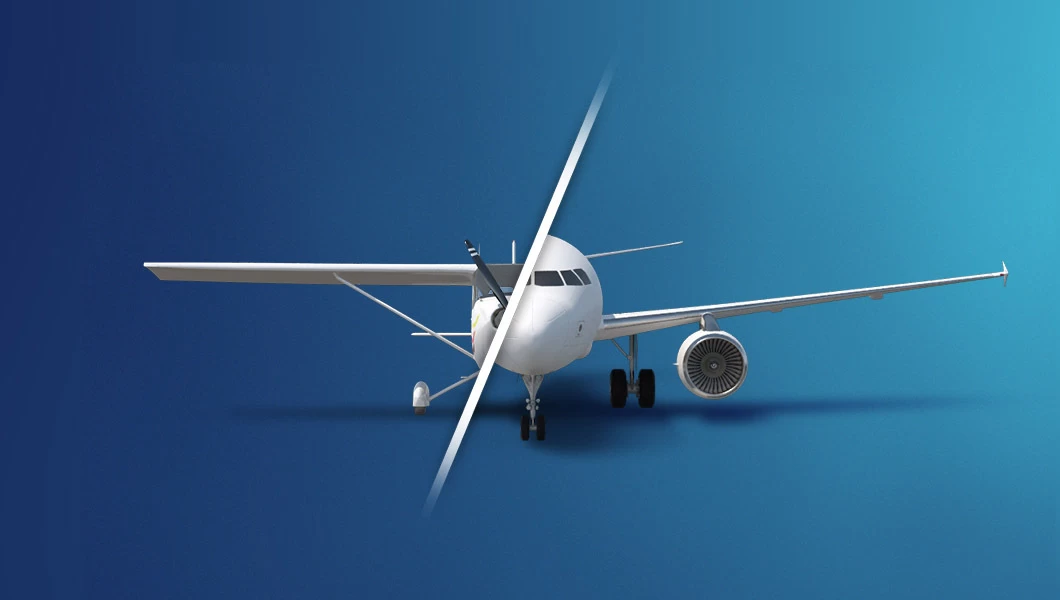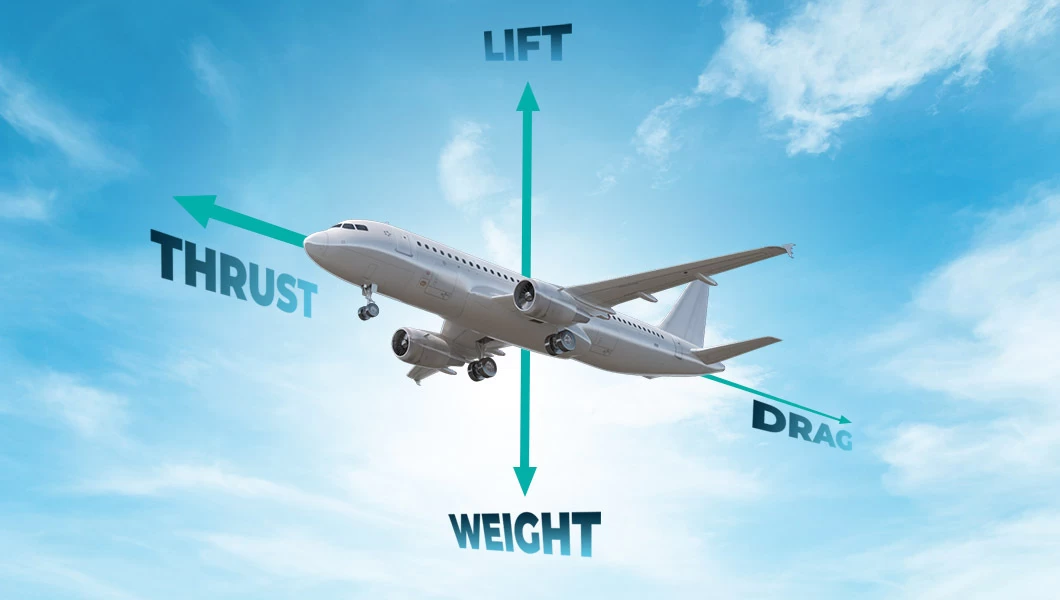As a budding pilot, logging time accurately is an art you must master. The key is to know what qualifies as flight hours based on flight type, your training organisation, and your country’s aviation regulations.
Here’s a primer on recording and documenting your pilot logbook entries to ensure you’re doing it right.
What Qualifies as Valid Flight Hours?
According to the ADREP 2000 Taxonomy (pdf) issued by the International Civil Aviation Organization (ICAO), flight time is defined as “the total time from the moment an aeroplane first moves for the purpose of taking off until the moment it finally comes to rest at the end of the flight.” In other words, this means you should log from the time the aircraft reverses to the taxiway to the point when it reaches the arrival gate and shuts off the engine.
The ICAO definition of flight time has been more or less adopted by agencies such as the European Union Aviation Safety Agency (EASA). However, these agencies often have additional definitions such as flight time under Instrument Flight Rules (IFR) and Visual Flight Rules (VFR). As a new pilot, you should apply the rules laid out by your respective aviation regulator. Student pilots should consult their flying instructor (FI) for the right information.
Pilots looking to gain a license or apply to airline job listings can use the following table to understand what counts as valid flight hours. You can follow this as a benchmark to satisfy hour requirements for a commercial pilot license (CPL) and airline transport pilot license (ATPL).
| Serial | Type of pilot experience or training | Valid pilot logbook hours | Remarks |
| 1 | Solo | All of the solo flight time when the pilot is the sole occupant of a flight | A PIC may also log solo flight time as PIC time if they’re a license holder |
| 2 | Pilot in command (PIC) | License holder: All of the flight time during which the pilot is the PIC Applicant for license: All of solo flight time, SPIC time, and PICUS time (if countersigned by an instructor) | A PIC license holder can legally log their solo flight and PICUS time too if needed |
| 3 | Student pilot in command (SPIC) | All of flight time when accompanied by an authorized flying instructor (FI) and who does not influence or control the flight | Applicable only to trainee pilots |
| 4 | Pilot in command under supervision (PICUS) | All of flight time when all the duties and functions were carried out by the pilot without any intervention of the PIC in the interest of safety and provided the method of supervision is acceptable to the competent authority | |
| 5 | Second in command (SIC), co-pilot, or first officer (FO) | All of flight time during which the pilot occupies a pilot seat as co-pilot (right seat) on an aircraft that requires more than one pilot | |
| 6 | Instrument time or instrument approach | All flight time when the pilot operates the aircraft by reference to instruments (simulation or actual) | |
| 7 | Dual instruction or instruction time | All time logged as flight instruction, instrument flight instruction, instrument ground time (if verified by an authorized FI) | This can also be counted as training time |
| 8 | Simulator time | All time logged in a full flight simulator (FFS) with or without supervision | This can also be counted as training time |
| 9 | Flight training device | All time logged in a flight training device (FTD) | This can also be counted as training time |
Please note that valid flight hours may differ depending upon the regulatory body governing your jurisdiction. When in doubt, always consider the entire flight time, i.e., off and on the blocks.
Example of a Pilot Logbook PIC Time
Below are images of a sample entry where a pilot has logged PIC time along with other flight details. In a typical pilot logbook, there are 10-12 columns that are usually printed over two pages.
In the pilot logbook example below, the PIC has logged time for three flights. The valid flight hours are 2 hours 15 minutes, 1 hour 20 minutes, and 9 hours 40 minutes. The fourth entry is an FTSD session.
Note the SE and ME time, number of landings, and remarks. The pilot has also logged night time and IFR time separately in the logbook sample below. This is crucial for pilot currency, where you may need certain night time hours to earn a certificate or rating.
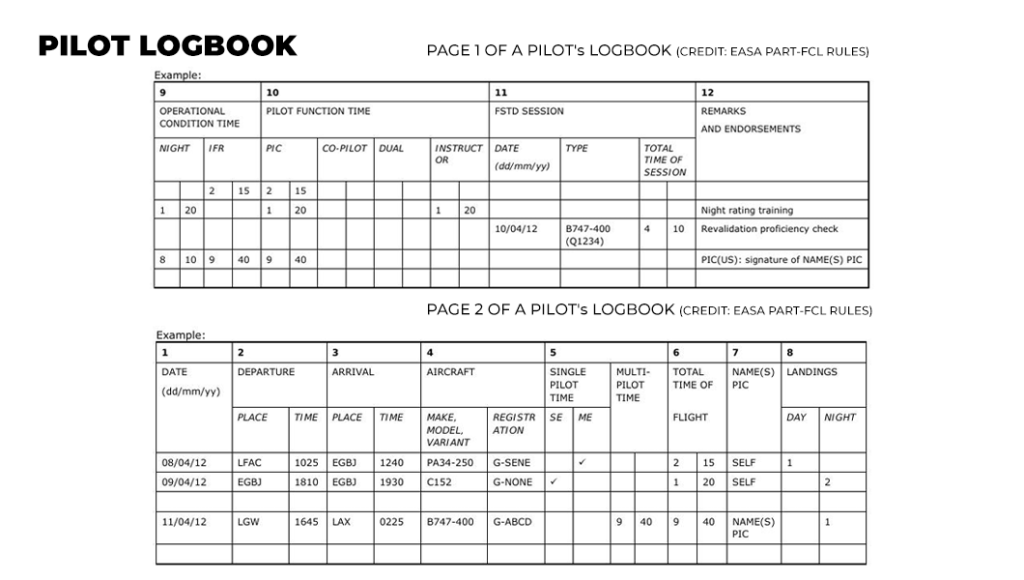
You can use your aircraft’s Hobbs meter or Tachometer to count flight hours. However, using a manual recorder like a watch time to record the “chocks off” and “chocks on” is considered best for accuracy.
If you’re a commercial pilot, it’s best to stick to your airline’s policy on logging hours to ensure company and regulatory compliance.
Notes on Filling a Pilot Logbook
- All times (of departure and arrival) should be in UTC.
- Record the type of engine only if you’re a single pilot (SP).
- In commercial aviation, flight time is always rounded to the nearest minute. If your recorded flight time is 3:39:45, you should record it as 3 hours 40 minutes in your logbook.
- Some pilots choose to round off to five minutes or the nearest decimal. As long as you maintain consistency in your logbook, it shouldn’t be a problem.
- SPIC and PICUS time are logged under PIC (in the above example logbook).
- Flight simulation training device (FTSD) sessions should be logged whenever applicable.
- When totalling hours in your logbook, always count actual flight time, not simulation or device time. Simulation and device hours will typically count towards pilot currency when you’re applying for a commercial pilot license.
What Doesn’t Qualify as Flight Hours?
Your PILOT CAREER
starts with a first click
- You are not flying a certified aircraft that is under the operational control of a member state or municipal law enforcement agency.
- You are not inside the aircraft (say, due to a malfunction while in the taxiway).
- You are not operating an aircraft for the purposes of a flight.
- You are not qualified for the role (like PIC).
- Your aircraft is being towed by a tractor.
- Simulation time (it only can be recognized as valid hours for a student pilot).
Tips for Accurate Pilot Logbook Recording
- Know your aviation regulatory authority and log time based on its rules.
- Make the pilot logbook entry as soon as you’re done with your flight.
- Use consistent notations and abbreviations. For example, the places of departure and arrival can be recorded by their ICAO codes (e.g.: LFPG for Charles de Gaulle Airport in France).
- Make sure you take FI or PIC approvals wherever needed and on time.
- Maintain a backup of your logbook through a periodic digital scan or photograph. Student pilots can also choose to maintain a secondary digital logbook.
- Buy a good-quality logbook.
- Reflect on your total logged hours periodically to check if you’re overworked or underpaid.

Today, a pilot’s logbook is considered a legal document that you must maintain from the time you start flying.. It is a documentation of your pilot life and a crucial tool for your flying career. Spending time to know the rules and regulations surrounding accurate flight time logging is therefore critical. It’ll not only help you get certifications, ratings, and your first airline job but also act as a record of your flying experience.
We hope this pilot logbook entry guide has helped you understand the basics and build flight time more efficiently.

